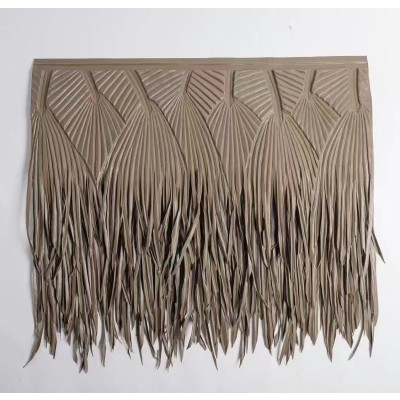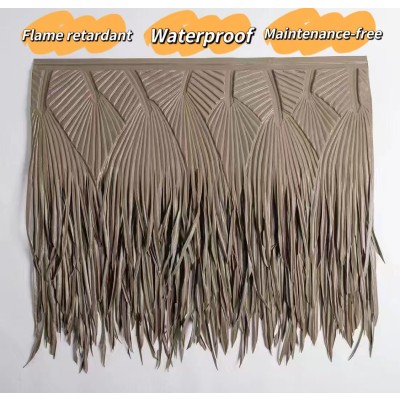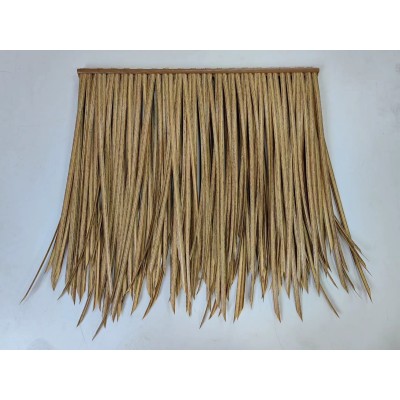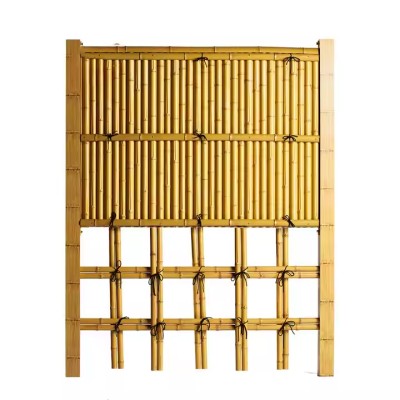The leap from natural to synthetic thatch at Rihivili Beach Resort, Maldives
The leap from natural to synthetic thatch at Rihivili Beach Resort, Maldives
Roofing: The resort's 48 rustic mini water huts, all with thatched roofs, blend perfectly with the local natural environment to create a strong tropical island feel, providing visitors with a pristine, natural living experience.
How is the natural thatch roof at Rihivili Beach Resort Maldives maintained?
The natural thatched roofs of Rihivili Beach Resort Maldives are usually maintained using the following methods:
1. Daily cleaning
1. Regular cleaning: Use a soft brush or broom to clean the thatch roof regularly to remove dust, leaves, bird droppings and other debris on the surface to prevent its accumulation affecting the drainage and permeability of the roof, generally 1-2 times a month.
2. Gentle cleaning: When necessary, you can use a water gun to gently rinse the thatch roof, but avoid using hard objects or too strong water pressure to avoid damaging the thatch. It is also possible to carry out a comprehensive cleaning before the rainy season to remove dirt.
Two, waterproof treatment
1. Check the waterproof layer: regularly check whether the waterproof layer under the thatch roof is intact. If there are signs of leakage or damage, repair or replace it in time. The waterproof layer generally requires a comprehensive inspection and maintenance every 5-10 years.
2. Paint waterproof paint: According to the actual situation of the thatch roof, special waterproof paint can be painted on the thatch surface every 2-3 years to enhance the waterproof performance of the thatch and extend its service life.
Three, corrosion and moisture
1. Anticorrosion treatment: Every 3-5 years, the thatch is treated with anticorrosion. Preservatives can be used to soak or spray the thatch to prevent moisture, mold, rot and insects from eating the thatch.
2. Keep it ventilated and dry: Ensure that the space under the thatch roof is well ventilated by installing ventilation devices, such as ventilation fans, vents, etc., to accelerate air circulation and reduce the accumulation of humid air in the roof. In the wet season, more attention should be paid to keeping the roof dry, and dehumidification equipment can be used if necessary.
4. Inspection and repair
1. Regular inspection: Conduct a comprehensive roof inspection at least once a year to see if the thatch is loose, falling off, broken or deformed, especially after experiencing bad weather such as strong winds, heavy rain, typhoons, etc.
2. Timely repair: For the small area damage found, such as the damage or loss of individual thatch, the same thatch material can be used in time to repair; For extensive damage or severely aged thatch roofs, partial or total replacement may be required.
5. Fire prevention measures
1. Pay attention to fire safety: thatched roof is flammable material, so it is strictly prohibited to use open flames near the roof, such as smoking and setting off fireworks. At the same time, it is necessary to ensure that the installation and use of electrical equipment in the resort comply with safety regulations to prevent fires caused by short circuits.
2. Equipped with fire fighting equipment: fire extinguishers, fire hydrants and other fire fighting equipment are reasonably equipped in the resort, and regular inspection and maintenance are carried out to ensure their normal use. At the same time, formulate a perfect fire emergency plan, and regularly organize employees to carry out fire drills.
Rihivili Beach Resort Maldives features a synthetic thatch roof
First, durability
1. Corrosion resistance: synthetic thatch is usually made of weather-resistant materials, such as high-quality plastic or fiber, which is not as susceptible to erosion and decay by rain, sea water and humid air as natural thatch, which can greatly extend the service life of the roof and reduce the trouble and cost of frequent replacement.
2. Anti-ultraviolet: can resist the strong sunlight of the Maldives for a long time, not easy to fade, deformation, maintain a good appearance and performance, so that the roof can still maintain the initial beauty after many years.
3. Strong wind resistance: synthetic thatch is generally light in texture and stable in structure, which can better withstand the strong wind weather common in Maldives after firm installation, reducing the risk of roof toppling or damage, such as providing more reliable protection for the resort during typhoon season.
Second, security
1. Good fire performance: Different from the flammable characteristics of natural thatch, many synthetic thatch have been specially treated and have good fire performance, which can effectively reduce the probability of fire occurrence, improve the fire safety of the resort, and protect the life and property safety of tourists and employees.
2. No moth hazards: It will not attract insects, mice and other pests like natural thatch, avoiding roof structure damage and health problems caused by moth moth, and reducing the workload and cost of pest control treatment of thatch.
Third, maintenance management
1. Low maintenance cost: there is no need for regular anti-corrosion, insect-proof, waterproof and other complex treatment like natural thatch, and there is no need to frequently check and replace damaged thatch, just regular simple cleaning, such as washing with water or wiping with a soft cloth, can keep the roof clean and beautiful, saving a lot of manpower, material and financial resources.
2. Easy to install and replace: synthetic thatch is generally produced in the form of coils or plates, which is relatively simple and quick to install, which can greatly shorten the construction time of the roof and reduce the impact on the normal operation of the resort. If there is local damage, it is also easier to carry out individual replacement without the need for extensive removal and resurfacing like natural thatch.
Fourth, the aesthetic aspect
1. Highly simulated: Modern synthetic thatch manufacturing technology is advanced, can highly imitate the appearance and texture of natural thatch, and even in terms of color, texture and other aspects can be customized according to needs, and complement the tropical island environment of Maldives, creating a natural and original holiday atmosphere for tourists.
2. Lasting color: Its color stability is high, it will not fade rapidly due to long-term exposure to the sun or washed by rain, and can maintain bright and natural color for a long time, so that the architectural appearance of the resort is always as new.
5. Environmental protection
1. Recyclable: Some synthetic thatch materials can be recycled after the end of their service life, reducing environmental pollution and in line with the concept of sustainable development.
2. Reduce the consumption of natural resources: The use of synthetic thatch can avoid damage to the local ecological environment caused by mass collection of natural thatch, and protect the natural resources and ecological balance of Maldives



